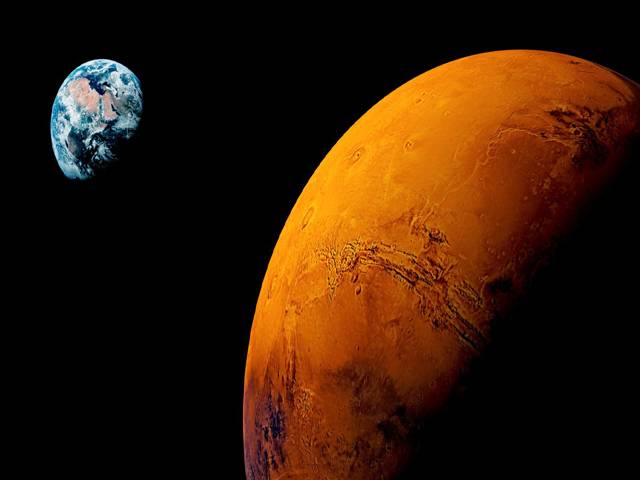Arizona-A bizarre pit in Mars’ southern hemisphere has left scientists baffled as to how it formed.
The feature, which resembles the home of a fictional Star Wars beast that could swallow a person whole, may have been created from an impact with a rogue space rock – or, it could be the result of a collapse at the surface.
A stunning new image captured by the HiRISE instrument on Nasa’s Mars Reconnaissance Orbiter has revealed a look at the strange circular formation and the surrounding ‘Swiss cheese terrain’ on the red planet.
The image was captured on March 25, during the late stages of summer in Mars’ southern hemisphere, researchers say. At this time, the sun sits low in the sky, better revealing the subtle texture of the Martian surface.
‘We see many shallow pits in the bright residual cap of carbon dioxide ice (also called “Swiss cheese terrain”),’ wrote Alfred McEwen, of the University of Arizona’s Lunar & Planetary Laboratory.
‘There is also a deeper, circular formation that penetrates through the ice and dust.’
The expert says the pit could be either an impact crater or a collapse pit, both of which are common on Mars.
From the angle captured by HiRISE, the menacing-looking depression looks much like the Great Pit of Carkoon, which housed Jabba the Hutt’s carnivorous sarlacc in the Star Wars series.
It isn’t the first time scientists have spotted an unusual crater on Mars.
Earlier this year, researchers investigated a bizarre scaly feature discovered on the South Polar layered deposits.
While it’s thought to be an impact crater, the icy terrain experiences processes that drastically alter the form of surface features such as these, causing uncertainty about its true origin.
The size and frequency of impact craters on Mars can help scientist paint a clearer picture of a landscape’s age, according to Nasa.
But, as they flatten and morph over time, it’s sometimes difficult to ascertain an impact origin.
This is the case with the strange scaly indent captured by the HiRISE instrument.
An image of the feature projected at a scale of 50 centimeters (19.7 inches) per pixel shows how it dwarfs all the other pock-marks that dot the landscape.
It came just days after Nasa revealed the Mars Reconnaissance Orbiter has completed 50,000 orbits around the red planet since 2006.
The space agency released a stunning animation that shows how the observations have accumulated over the last 11 years.
The mosaic shows the increasing coverage at just one frame per month, revealing how the orbiter’s Context Camera pieced together more than 99 percent of the Martian surface.






